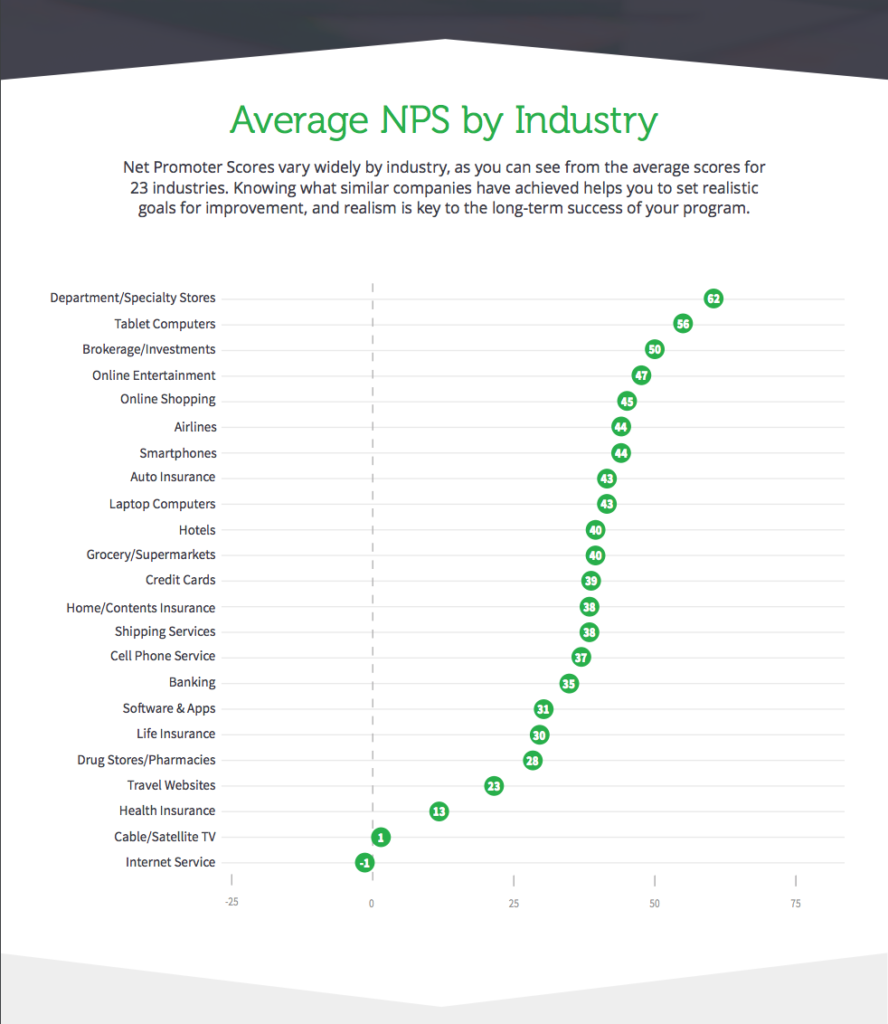Net Promoter Score is a tool that allows us to measure the loyalty of our clients through recommendations.
Thanks to Social Networks, a praise or even a complaint can spread at a high speed and to be able to react and be up to the task as a company in this circumstance is necessary to become familiar with the use of indices that provide us with a clear and concise understanding of which it is the level of satisfaction of our clients with respect to our offer of products and services.
What is Net Promoter Score? NPS
Net Promoter Score is an index that is obtained from the classification of clients in three large groups: Promoters, Passives and Detractors.
The promoters are those clients who have enjoyed a satisfactory experience and are willing to recommend our brand. The Liabilities are those users who, although they show a high satisfaction index, are indifferent to a possible recommendation of our products and services to third parties, while the Detractors are part of a group whose level of satisfaction is very low and they are prone to to spread your negative experience among your contact network.
Through satisfaction surveys we obtain relevant information on how our brand aligns with the expectations of customers and users. To reach a greater precision in our calculation of the NPS, what we do is to establish a rating from 0 to 10 on the different aspects that determine the level of quality that our products and services have provided and that will allow us to catalog the responses of the following mode:
The clients that have valued between 9 and 10 are the Promoters and therefore we already know that they will actively recommend our brand.
The customers who have valued between 7 and 8 our questions are the Liabilities, and therefore we can conclude that they are neutral.
Those who have valued between 0 and 6 are the Detractors, customers who not only will not recommend our brand but will probably spread their low level of satisfaction among their contact network.
How is the Net Promoter Score calculated?
To calculate the NPS we must subtract the Detractors from the percentage of Promoters. Obviously, the lower the percentage of Detractors, the higher the level of customer satisfaction with the products and services provided by our company. This type of surveys also helps us compare different levels of service within our own offer, which also helps to identify improvements within the company’s overall portfolio.
Let’s see a first simple example: let’s imagine that we send a satisfaction survey to 100 of our clients where 70% are Promoters, 10% are Liabilities and 20% are Detractors. The formula for calculating the NPS would be:
NPS = 70% – 20% = 50
As it can be verified, the Liabilities are not considered to calculate the NPS since they do not contribute relevant information to our calculation.
How to make a good satisfaction survey?
A good satisfaction survey is one that provides us with data of interest from an inquiry that we would structure in two phases:
- Phase 1: We try to fathom the predisposition of the client to recommend our products and / or services and for this we regiment the different groups to which we are going to send the survey. It is in this phase where we ask to evaluate from 1 to 10 the level of satisfaction and where we classify the clients in Promoters, Passives or Detractors and where we calculate the NPS.
- Phase 2: The objective in this step is to recapitulate the reasons that lead to recommend our products and / or services. It is about asking open questions (not scoring from 1 to 10), such as “What are the aspects of the company that you do not like?” (to the Detractors), “What aspects should the brand improve for you to recommend?” (to Liabilities), or “What aspects of our company do you highlight when you recommend us?” (to the Promoters).
Type of NPS Surveys
Normally there are two types of NPS survey that will determine when and how we should address our clients:
- Relational survey. If we have a long-term relationship with our clients, it is interesting to send satisfaction surveys on a monthly or even quarterly basis to determine their level of satisfaction and their propensity to change in favor of a better offer from our competitors.
- Transactional survey. Are those that are sent almost immediately after the achievement of certain events or actions such as a purchase, a call to our customer service center or if the user remains inactive for a long period of time, for example, if not in our online platform for a couple of weeks.
Net Promoter Score by Industries
To compare our company with those of our sector and according to a study prepared by Satmetrix, the NPS index by industry would be as follows:
We only describe the highlighted ones. All sectors are shown in the graph that we publish in this same entry
eCommerce: 45
Online entertainment: 47
Airlines: 44
Hotels: 40
Banking: 35
Health Insurers: 13
Car Insurance: 43
Travel Websites: 23
Telephone Services: 37

The NPS Index and Customer Loyalty
Why should we measure the level of Customer satisfaction with some regularity? Mainly for two reasons:
- It is between 5 and 25 times more expensive to acquire new customers than to retain those we already have.
- Increasing customer loyalty by 5% can increase the profit between 25% and 95%.
Therefore, we must help within the company those who constantly strive to attract new customers to the company by giving the loyalty strategy a very relevant specific weight in order to increase turnover and obtain important information on where to direct. your efforts the organization in the future.
The level of competitiveness of the markets is growing and taking advantage of each piece of information, each opinion, each gap is essential to grow according to standards that progressively represent increasingly complex challenges to solve.
 English
English  Español
Español 



